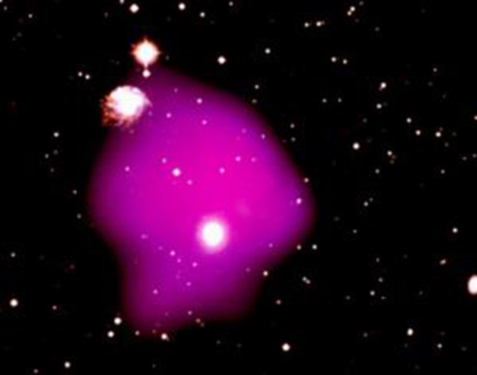
Plate 10: Darkness visible
 Plate 10: Dark matter does not emit light; it's "seen" only through its gravitational influence on the motion of ordinary matter. Through image processing we can let our eyes see the world as gravitons do. Surrounding the concentrated knots of matter visible to light-gathering telescopes (ordinary galaxies) we find diffuse, extended haloes of something else -- a wholly new form of matter.
Plate 10: Dark matter does not emit light; it's "seen" only through its gravitational influence on the motion of ordinary matter. Through image processing we can let our eyes see the world as gravitons do. Surrounding the concentrated knots of matter visible to light-gathering telescopes (ordinary galaxies) we find diffuse, extended haloes of something else -- a wholly new form of matter.
Ideas to improve the equations of physics predict new forms of matter whose properties make them good dark matter candidates. Soon we may learn which, if any, of those ideas correspond to reality. This picture, taken by ROSAT, shows confined hot gas highlighted in false purple color, and provides clear evidence that the gravity exerted in groups of galaxies exceeds all the individual component galaxies combined. The extra gravity is attributed to dark matter.
More about this image
NASA's Astronomy Picture of the Day credits this beautiful image to "ESA, NASA, and R. Mushotsky," explaining it as follows:
"Is the gravity of the above galaxies high enough to contain the glowing hot gas? Superposed on an optical picture of a group of galaxies is an image taken in X-ray light. The X-ray picture, taken by ROSAT, shows confined hot gas highlighted in false red color, and provides clear evidence that the gravity exerted in groups and clusters of galaxies exceeds all the individual component galaxies combined. The extra gravity is attributed to dark matter, the nature and abundance of which is the biggest mystery in astronomy today."
NASA still images are not copyrighted.